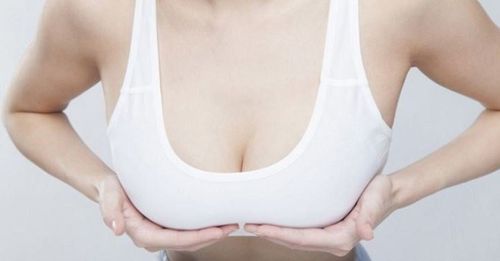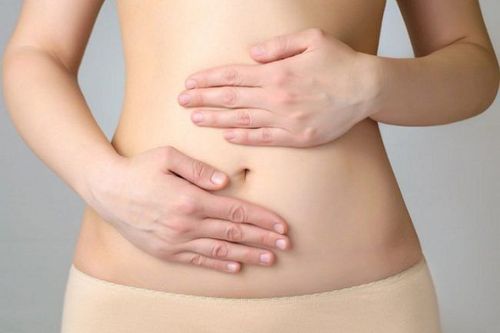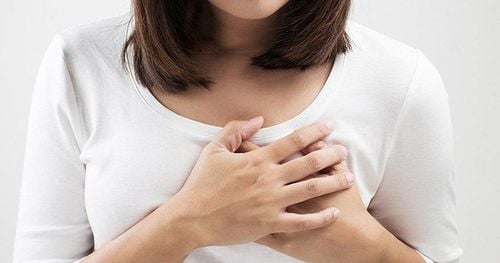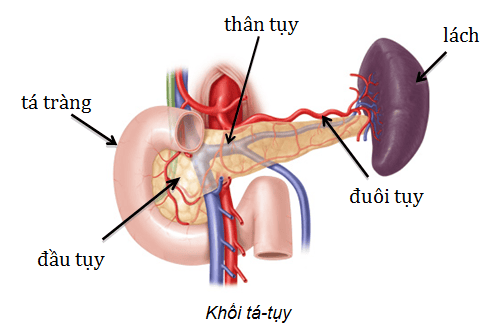This is an automatically translated article.
Your breasts will go through changes when you have your period, when you are pregnant or breastfeeding, as you go through puberty or enter menopause. But beyond these stages, how do we distinguish between normal and abnormal breasts?
1. Learn about breasts
Breasts are covered by a thick cuticle. Each breast consists of a nipple and is surrounded by the areola. The inside of the breast consists of lobes and milk ducts, with about 10-20 milk ducts per breast. Inside these lobes are smaller lobes. The milk duct system develops during puberty, and it only matures when you're pregnant and producing milk.
The nipple is located in the center of the darker skin called the areola. The areolas contain small glands called Montgomery's glands, which help produce oil that lubricates the nipples during pregnancy and lactation. Most of the breast is covered by a thick layer of fatty tissue, the fat layer under the breast is thicker in people with large breasts.
There is no muscle in the breast, but there is pectoral muscle or muscle that lies under each breast and covers the ribs.
Each breast also contains blood vessels, as well as vessels that carry a fluid called lymph. Lymph moves throughout the body through a network called the lymphatic system. The lymphatic system carries cells that help the body fight infections. Lymphatic vessels lead to lymph nodes (small, bean-shaped glands).
Breast development and function depends on the hormones estrogen and progesterone, which are made in the ovaries. Estrogen lengthens the ducts and causes them to produce appendages. Progesterone increases the number and size of the lobules in preparation for childbirth.
After ovulation, progesterone causes breast cells to grow and blood vessels to widen, filling with blood. At this time, the breasts are often filled with fluid and may be tender and swollen.
Here's what to know about breast problems you may notice.
2. Breast tumor
You shouldn't be too worried, it's best to see a doctor to find out what it is. This is especially important if you notice large lumps in your armpits or if the milia hasn't gone away after 6 weeks.
Your doctor will examine your breasts and may order a mammogram or some other related test. Your doctor may use a needle to remove some fluid from the area or take a small sample of the tumor for further testing.
You should know what is normal for your breasts. That way, if you notice something out of the ordinary, you can talk to your doctor to find out what it is.
To detect breast cancer early, you should have regular breast cancer screening, especially the group of people over 40 years old, who are at high risk of this disease. Currently, Vinmec International General Hospital offers a Breast Cancer Screening Package to help patients detect this dangerous cancer early even when there are no symptoms.
When registering for a breast cancer screening package, customers will receive:
Examination and consultation with an oncologist. Breast cancer screening by bilateral breast ultrasound and mammogram.
3. Change color and texture
If the skin around the breast is indented, itchy, scaly or red, you should see your doctor. You may be watched by your doctor or asked to have a biopsy - removing a small piece of tissue to make sure everything is okay.
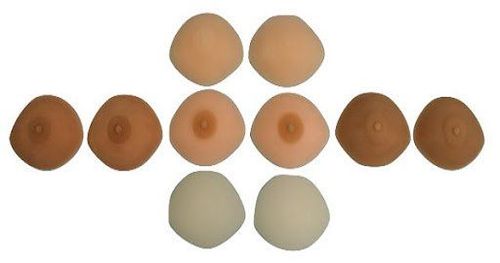
Nếu da xung quanh vú bị lõm, ngứa, có vảy hoặc mẩn đỏ, bạn nên đến bác sĩ kiểm tra
4. Rash in the breast
You may experience redness or irritation on your breasts, or you may develop an itchy, painful, scaly, blistering rash. If you see or feel any of these symptoms, you should contact your doctor right away.
Chest rash can also be caused by a number of reasons such as:
Eczema Candida (a yeast infection) Cellulitis (a bacterial skin infection) Psoriasis Scabies Dermatitis seborrhea (a skin condition) Some rashes occur only on the chest. This can be caused by:
Breast abscess Duct ectasia (when the milk ducts below the nipple are wider) Mastitis (an infection of breast tissue usually associated with breastfeeding) Nipple dermatitis A rash on the nipples can also be a sign of several different types of breast cancer. A rare form, such as Paget's disease of the breast, begins on the nipple and spreads to the skin around it (which your doctor may call the areola). Or inflammatory breast cancer that causes your breasts to be red, swollen, and tender. It happens when cancer cells block the lymphatic vessels in the skin of your breast.
5. Fluid coming out of the breast
This includes any fluid coming out of your nipples. It can occur during pregnancy and lactation. It can even continue for up to 2 years after you stop breastfeeding. These are normal signs.
Milky discharge from both breasts can also occur before menopause. This is due to hormones. This condition is not uncommon.
But if the discharge is bloody, green or clear; or only one breast; If a lump develops, see your doctor, whether you're in menopause or not. The cause can be an infection, a cyst, a benign tumor (such as a fibroid), or cancer.
Your doctor will conduct a physical examination of you, including a physical examination of both breasts, through your symptoms and medical history. You may also be ordered to have a mammogram or an ultrasound to examine the inside of your breast.
6. Nipple pain
Your nipples are sensitive and they can hurt for a variety of reasons, from clothes that don't fit right to more serious reasons.
Skin conditions such as dermatitis, contact dermatitis, and eczema can cause sore nipples. Pregnancy or breast-feeding can also be a cause. For some people, sore nipples can be a sign of an impending period. Infections such as mastitis and thrush can also make nipple pain worse.
Sore nipples can make you worried about breast cancer. This can be a sign of breast cancer, but it is rarely the main symptom of the disease.
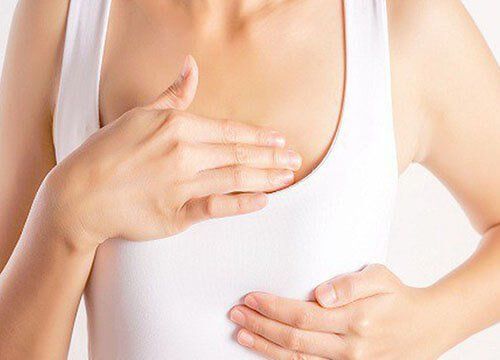
Các tình trạng da như viêm da, viêm da tiếp xúc và chàm có thể gây đau núm vú
7. Changing nipples
Occasionally, you observe a change in the nipple. If you notice your nipples becoming darker. This could be a change in the areola, which happens often.
Many women experience inverted nipples. This is considered a normal sign of aging and can happen while you're breastfeeding or it can happen after you've had breast surgery. It can also be the result of trauma to the breast.
Some people are born with inverted nipples. If your nipples are newly inverted, you should see your doctor. Because this can be a sign of mastitis, mastitis or an abscess under the areola.
If this happens suddenly with one or both nipples, it could be a sign of breast cancer.
8. Breast pain
Many women feel breast pain before or during their period. This is normal, usually the pain goes away on its own. But if it gets worse, or if it's affecting your daily routine, contact your doctor right away.
Factors that cause breast pain include birth control pills, large menstrual cup sizes, and hormones. During your exam, your doctor may consider whether changing your birth control pill (if you're taking it) might help, or adjusting your hormone therapy (if you're taking it to improve menopausal symptoms). In some cases, cutting back on caffeine can improve the condition.
9. Armpit pain
If you feel pain in your armpits and don't know the cause, you should see a doctor.
Although it can be caused by something as simple as muscle tension or swollen lymph nodes from a viral infection, armpit pain can also be a sign of breast cancer.
You may not notice the symptoms of breast cancer. But swelling and pain under the arm could mean the cancer has spread from the breast into the lymph nodes.
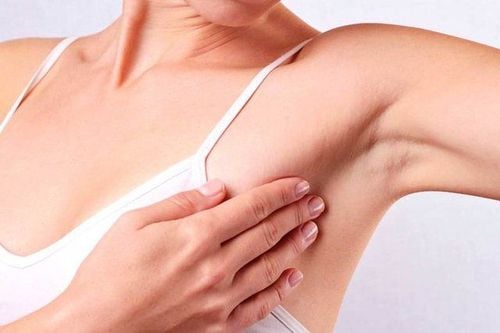
Đau nách cũng có thể là dấu hiệu của ung thư vú
10. Changes in breast size or shape
Your breasts can change in different times. For example, this can happen when you're menstruating and when you're pregnant, usually because of hormones.
As you approach menopause, you may feel like your breasts sag, shrink, and lose shape. This is normal.
But if you notice changes beyond these times, if there are certain differences in your breasts, check with your doctor to make sure everything is fine.
Please dial HOTLINE for more information or register for an appointment HERE. Download MyVinmec app to make appointments faster and to manage your bookings easily.
Reference source: webmd.com




